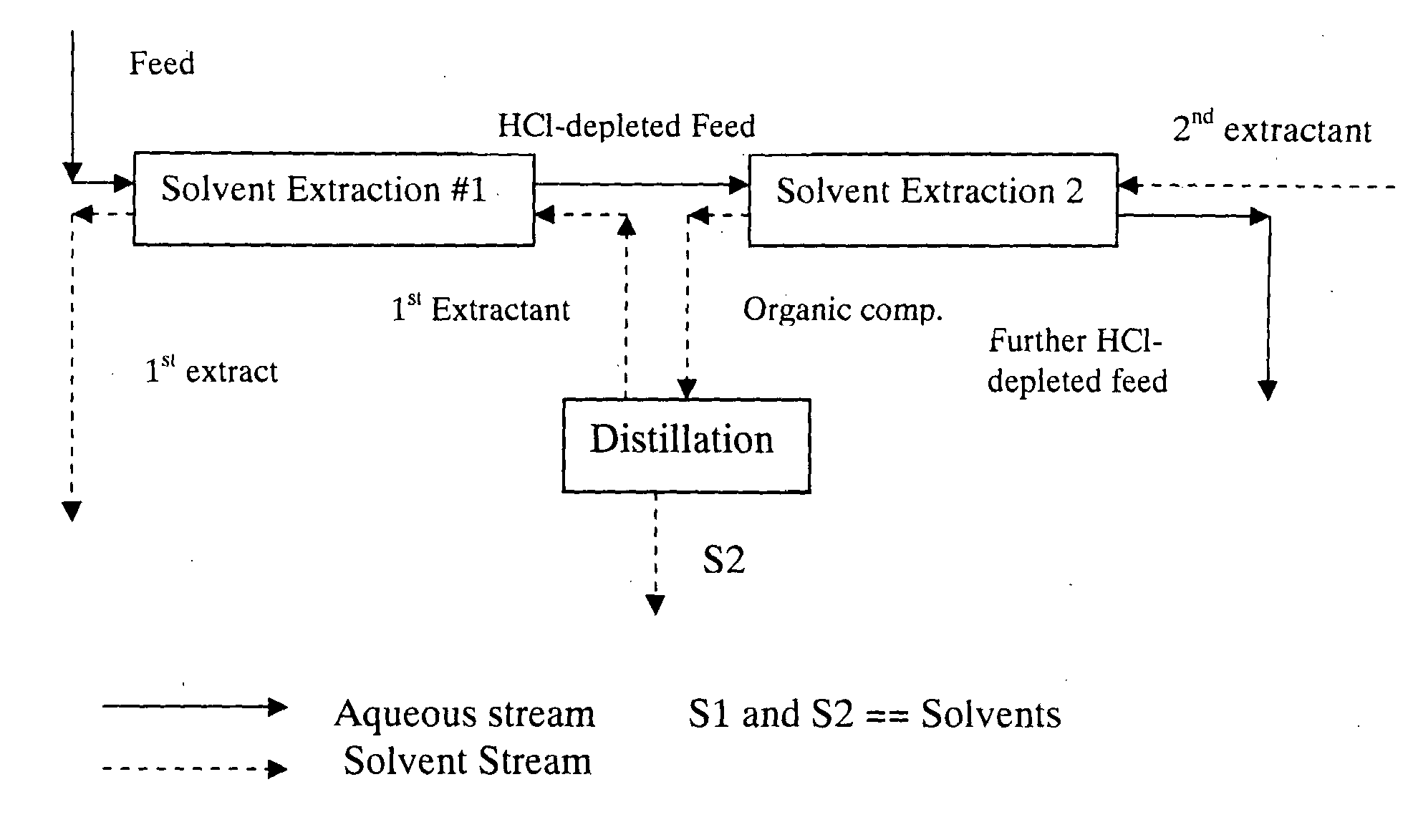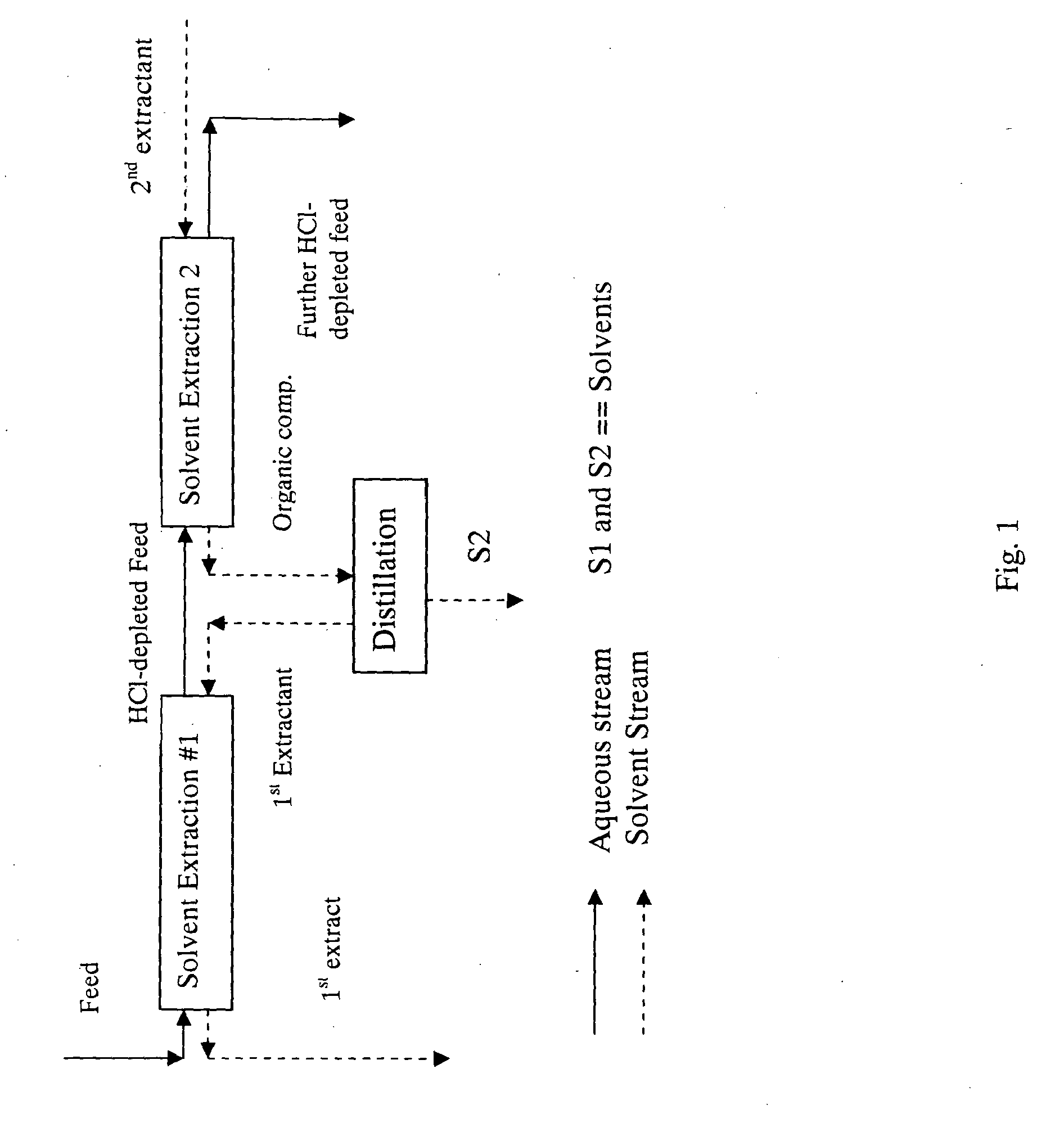Method for preparing a hydrolyzate
a hydrolyzate and hydrolysis technology, applied in chlorine/hydrogen-chloride purification, other chemical processes, chlorine/hydrogen-chloride, etc., can solve the problems of increasing food costs, limited resources in volume, and increasing consumption
- Summary
- Abstract
- Description
- Claims
- Application Information
AI Technical Summary
Benefits of technology
Problems solved by technology
Method used
Image
Examples
Embodiment Construction
[0066]1.3 gr 20% HCl solution, 1.42 gr water, 0.15 gr FeCl3*6H2O, and 1.3 gr hexanol or 1.3 gr butanol were introduced into a vial. The closed vial was shaken at 25° C. for 2 min. The phases were then separated and analyzed for HCl concentrations (by titration) and Fe (with ammonium thio-cyanide). The results are presented in Table 1.
TABLE 1Light phaseheavy phaseHClFecompositioncompositiondistri-distri-HClFeHClFebutionbutionselect-solventWt %Wt %Wt %Wt %coefficientcoefficientivityhexanol2.280.08811.51.180.200.0752.67butanol4.880.18510.51.010.460.1832.52
These results demonstrate selective extraction of HCl from the chloride salt when a hydrophobic solvent such as hexanol is used. The results also show a selective extraction of HCL form the chloride salt when butanol is used.
[0067]It will be understood by those skilled in the art that various changes in form and details may be made herein without departing from the spirit and scope of the invention as set forth in the appended claims....
PUM
| Property | Measurement | Unit |
|---|---|---|
| weight/weight ratio | aaaaa | aaaaa |
| weight/weight ratio | aaaaa | aaaaa |
| weight/weight ratio | aaaaa | aaaaa |
Abstract
Description
Claims
Application Information
 Login to View More
Login to View More - R&D
- Intellectual Property
- Life Sciences
- Materials
- Tech Scout
- Unparalleled Data Quality
- Higher Quality Content
- 60% Fewer Hallucinations
Browse by: Latest US Patents, China's latest patents, Technical Efficacy Thesaurus, Application Domain, Technology Topic, Popular Technical Reports.
© 2025 PatSnap. All rights reserved.Legal|Privacy policy|Modern Slavery Act Transparency Statement|Sitemap|About US| Contact US: help@patsnap.com



